- It’s What We Do
- Toby Price
- 14 Days In Northern Thailand
- Neck Braces
- Timor-Leste
- Ol’ Mate
- Coping With A Dunking
- Cameron Corner
- Landlocked In Laos
- Triumph Tiger 800XCx
- Shop Bike
- How To Ride with Miles Davis
- Can’t Judge A Book By Its Cover with Karen Ramsay
- Media Release With A Catch
- Preparing For Adventure with Robin Box
- Readers’ Ride: Victorian High Country
- FUSA
- Reader’s Pic
- Video Winner
- Adventure Film Festival
- Checkout
- Contributors
A good night’s sleep When preparing for an adventure ride of anything over a day in length, it’s easy to focus all your time and energy on the preparation of your bike. However, to many experienced adventurers, what happens off the bike is of just as much importance.
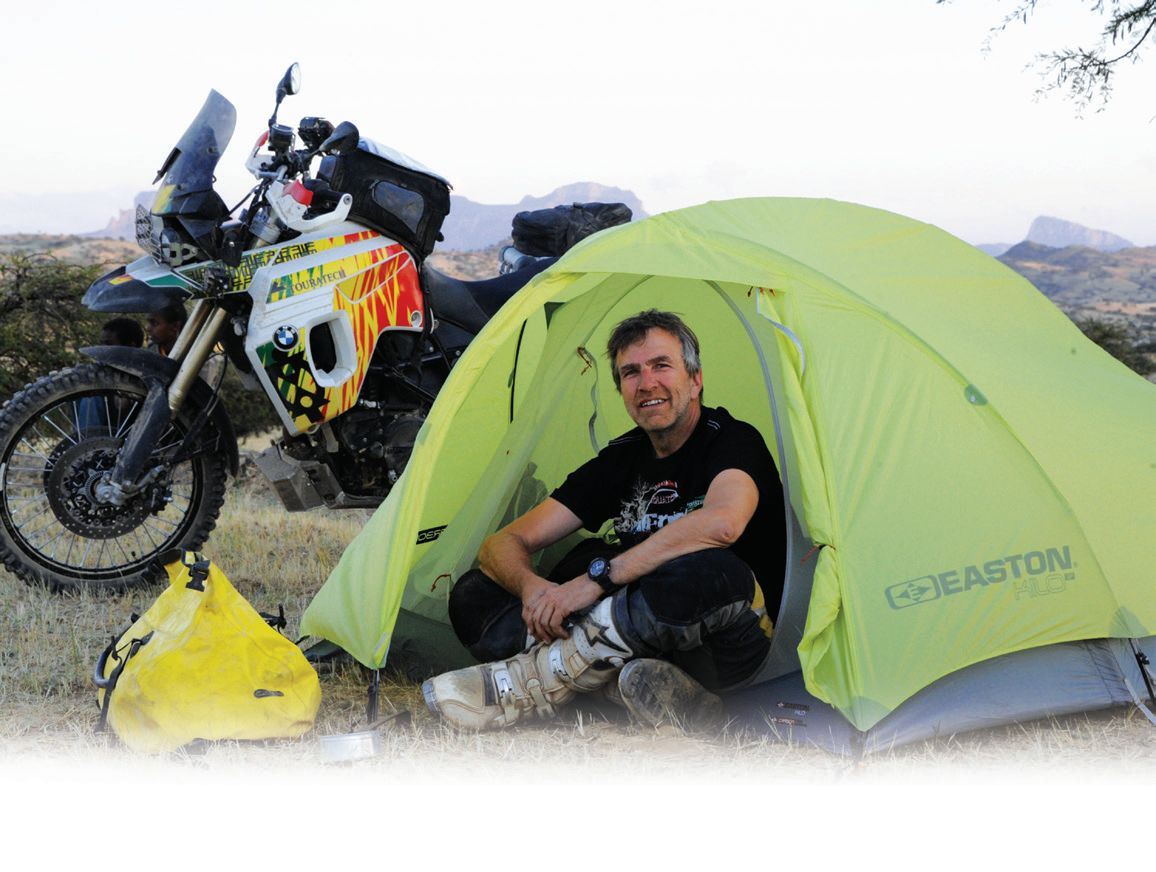
If you’re camping on your ride, your quality of sleep will have a major bearing on what sort of enjoyment you get from the next day.
In this issue we look closely at tents, mattresses and sleeping bags, with information we hope will have you well-rested and ready for the excitement that takes place on the bike.
After all, if you don’t sleep well, the whole adventure-travel experience may be one you’d rather forget.
Tents
With just about any product, you can spend as little or as much as you like, so we should stress from the outset that no matter what your budget, we recommend that you buy the best camping equipment you can afford.
In the long run, it will pay dividends.
You should match the tent to your occasions. If you’re only going to be away for one weekend, a couple of times a year, any little tent will do the job. Most tents are relatively waterproof in normal rain conditions, but not in strong or heavy rain as often the floors will leak.
You need to have a tent that’s got a fully waterproof floor, with the floor returning up the side by around 75mm or 100mm to give some vertical protection.
Often you’re only looking for good insect protection and some limited protection from the elements, but if you intend to be away for longer periods, the durability is compromised on some of the more basic, or less-expensive, tents. Increasing the durability without increasing the weight of the tent will also increase the price.
For travel where weight isn’t so critical,any tent will do the job, but typically you work on a weight range of one kilogram per person for your tent. You should always be weight conscious, because once you start your ride it’s difficult to lighten the load. We hear so often of people on long trips who start sending stuff home that they don’t need in order to make their bike lighter.
I’ve learnt this from the school of hard knocks and have made just about every mistake possible over the years, but hopefully we can fast track your learning so you head off as well-prepared as you can be.
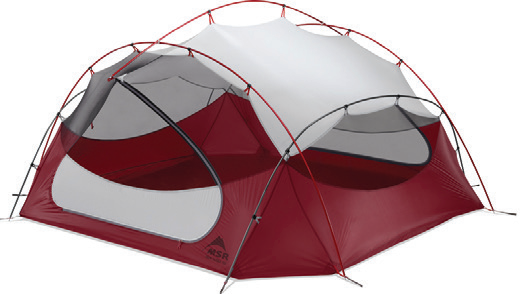
Find a level
You should use the same thinking for motor-cycle adventure travel as you would for hiking.
You’ll often encounter all types of weather conditions, so you’ll need something light to carry, but durable enough to keep you dry and to cope with reasonable wind.
For the more basic tents there are infinite possibilities – from your local Kmart through to camping and adventure stores. That’ll get you out on the road, but you’ll need to be mindful of the tent’s durability and weight if you hope to use it regularly and over long periods.
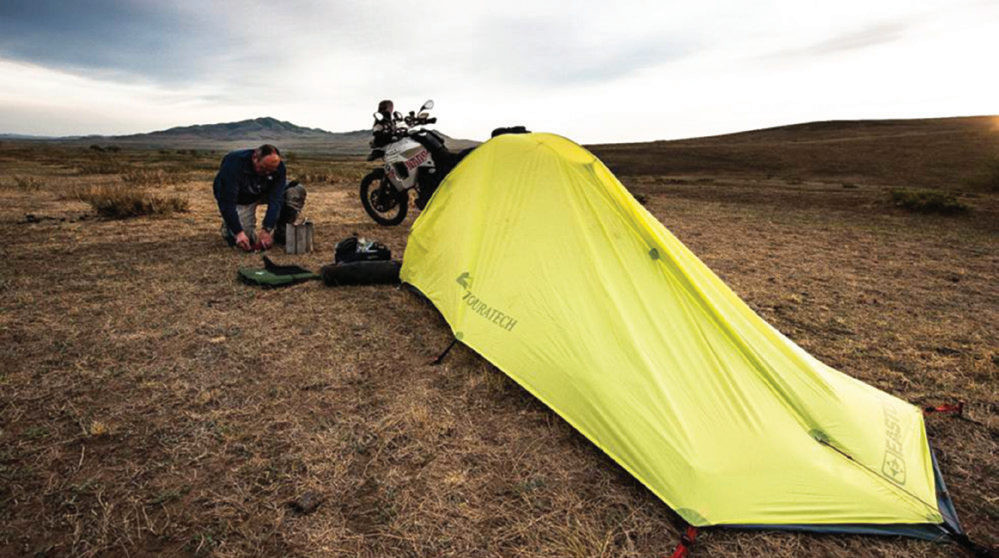
The next level of tent is what you’d typically be thinking of putting in your backpack in a hiking situation. You’ll need to try to keep as close as possible to one kilogram of tent per person.
While this is difficult to achieve if you’re travelling on your own, as a couple or if sharing the tent, then it’s quite possible.
A three-season tent, which will cover all conditions other than heavy snow and blizzard-type weather, should be suitable for your needs, and MSR makes a great range, with the Hubba variants being the most popular.
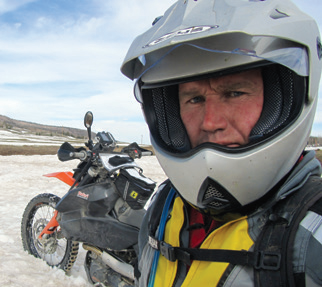 Robin Box
Robin Box
The difference in weight between a one-person Hubba tent (1.29kg packed) and a two-person Hubba Hubba (1.72kg packed) is only 430g. The Hubba has a vestibule (or awning) that you can put your gear under, but even when travelling solo I’ll use a two-person Hubba Hubba tent, as it means I can store my gear inside and out of the weather. It also enables me to eat inside if the weather is really bad.
These tents are quick and easy to put up, and often you don’t even need to peg them down if you place your gear in each corner of the tent. They’re also so light that when you finish camping you can pick the tent up with one hand by the frame and shake the dirt off the bottom. They have reflective straps and ropes on them that are a lot more useful than you’d realise, even just around the camp with a torch at night, and most quality tents have this feature.
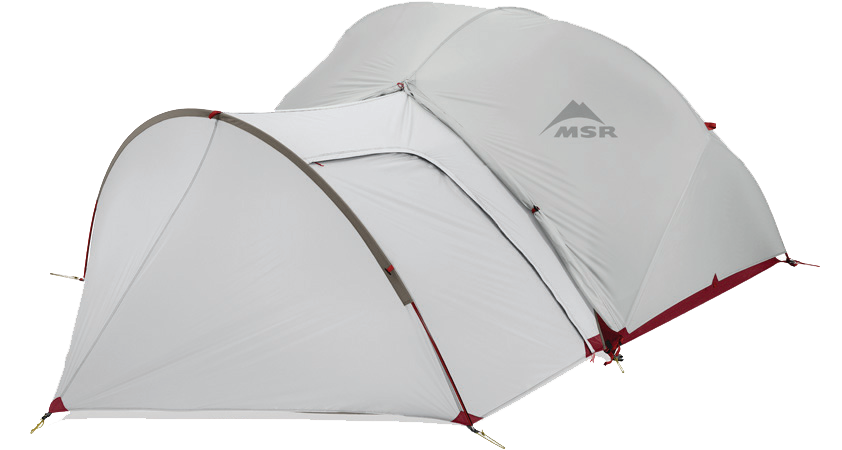
As mentioned, we use MSR, but the CEO of Touratech in Germany will also use Hilleberg, very robust, and probably the ultimate in tents. However, they are right at the top end of the price scale and are generally heavier tents more suited to extended travel of many months living off the bike.
Print job
I always use a footprint as well, which is like a groundsheet under the tent. This means the bottom of your tent won’t be wet and dirty from condensation, and will always be dry when you pack it up. You can simply shake out the footprint and fold it up separately to your tent. The footprint can also double as an emergency shelter.
I’ll use the Mutha Hubba (three-person) footprint under the Hubba Hubba (two-person) tent, and I’ll take some type of a doormat, such as a piece of old truck tarp, to help keep the inside of the tent clean. This is also used as a work sheet if I have to perform any maintenance on the bike.
There’s also an MSR add-on called the Nook Gear Shed that connects to the Hubba range and gives a separate area to store luggage. That can be really handy.
When selecting a tent, ventilation is very important. Tents with a door on each side are ideal, but big, tall, stand-up type tents are not really an option for motorcycle travel.
One-person tents are a good idea for solo travel, but for a little more weight you’ll be a lot more comfortable in a two-person tent.
In conclusion, you’ll want a tent that’s easy to set up, as light as possible, and with a waterproof floor. If you cover those items, you’ll be off to a good start.
Costs: From $99 from your local camping store through to the MSR range that includes the one-person Hubba ($649), the two-person Hubba Hubba ($749) and the three-person Mutha Hubba ($929). The heavier two-person Elixir retails for $489.
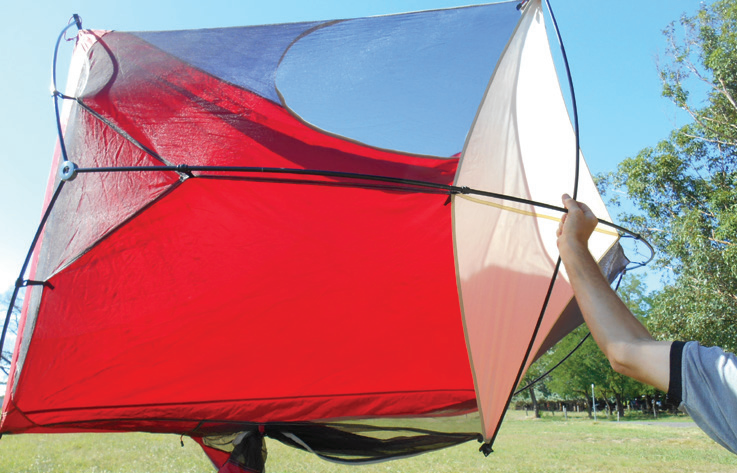
Bag man
The swag-versus-tent debate is also worth mentioning, as there’ll be experienced travellers who have established a combination that works for them. A lot of those people use swags, and for them the convenience of just rolling out a swag works really well in predictable conditions where there’s no rain.
I still use swags on occasions, but usually only when we have vehicle back-up.
There are some motorbike-friendly swags now, but these are heavier than tents.
However, if you have to cover more extreme conditions and encounter insects, rain or wind, a swag is very difficult, especially if it’s wet. You’ll even have to get out of it before you get dressed.
Even the most basic swag will weigh more than a well-chosen tent, air mattress and sleeping bag combination.
Mattresses
You will need some form of a mattress, and for equivalent comfort, a self-inflating mattress is a lot lighter than a foam mattress.
The mattress must be of good quality to have any durability, otherwise it could burst. We’ve used Thermarest for many years and have been very happy with them.
Self-inflating air mattresses will give a high level of comfort and pack the smallest. Foam rolls are carried by a lot of hikers, but they’re only about 10mm thick and give about the same comfort as sleeping on a carpet floor. I’ve not known any adventure traveller who doesn’t use an air mattress.
You should also store your air mattress inflated and flat, never rolled up. This ensures the structure inside the mattress that makes them stand up retains its shape. If you store them rolled up, they won’t retain their shape as well, or self inflate as easily. You generally have to add a little air to them, but don’t over inflate them, as this can also damage them.
Also, if you jump on them or fall on them, especially if they’re over-inflated, it will break the baffle lines inside the mattress and then not distribute the air evenly across the mattress.
Pump the mattress up to what you think is the right pressure, then lay on your side. If you feel your hip or your shoulder is touching the ground, you need to add more pressure until just above the point where they touch the ground. This will give you a firm, soft feel, which is the perfect combination. Getting this right will make a huge difference to the quality of sleep you’ll have.
Another trick is to scrape a small depression in the ground with the side of your foot, just where your hip or bottom will be on the mattress. We call it the hip groove, and it only needs to be about 10 or 15mm deep, but it will also add greatly to your sleep quality.
The new Thermarest ProLite Plus mattress is brilliant, and in my experience the new 38mm-thick mattress offers comfort previously only achieved with the heavier 50mm mats. The ProLite Plus weighs just 640g, including the carry bag.
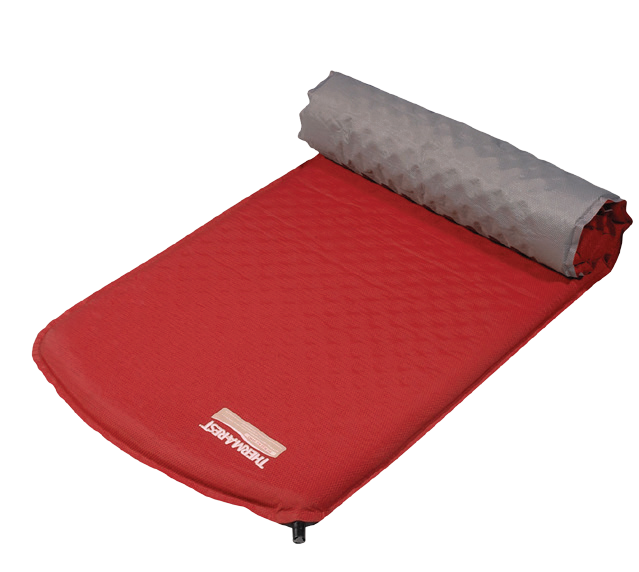
Sleeping bags
All sleeping bags serve a purpose, but generally speaking the less expensive they are, the narrower the temperature band they work in. Therefore, you need to make sure the bag you choose covers the extremities of the conditions you are likely to go into. That being said, the temperature rating given on a lot of sleeping bags is the survival rating, whereas the important figure is the comfort rating.
For example, a sleeping bag with a survival rating of -5 will usually have a comfort rating of five degrees. If it got to -5 you would be very, very uncomfortable.
Of course, you can improve your warmth by wearing thermals to bed, but you’ll need to ensure the bag you buy is suitable for the conditions you’ll be sleeping in. In places like the Australian outback, you can have 30-degree days and temperatures below zero at night, so you need to be aware of this. I’ve had times I’ve been so bitterly cold I wished I wasn’t there and couldn’t wait for the night to end. Even getting up and putting all my bike gear back on and going back to bed didn’t help. Once you get cold, it’s very difficult to warm up again.
Check the minimum and maximum temperatures of the places you’re going, and choose a sleeping bag with a comfort rating to cover that. You’ll have no troubles with a sleeping bag that’s too hot, but you definitely don’t want a bag that is not warm enough.
Deeper and down
Sleeping bags filled with down are the ultimate, giving the best possible warmth, while keeping the weight to a minimum. Synthetic sleeping bags have improved a lot over the years and are a good option, but in my experience nothing compares to a down bag.
The quality of the down is measured in ‘loft’, with a 700-loft down being standard, and an 800 loft being a high-performance down. A down bag will be 35 per cent to 50 per cent lighter than a synthetic sleeping bag.There’s a lot of science that goes into sleeping bags, and I’ve had all sorts of them. On my first desert experience I was out for eight days, and on three of those I had the most miserable nights I’ve ever experienced. I then went to a higher-grade synthetic bag, and then managed to cross paths with Melbourne company One Planet, who now make the sleeping bags sold by Touratech in Australia.

Touratech’s One Planet sleeping bags are all 800 loft, reducing the weight and the packing size, but also offering high performance in all conditions.
A good quality 800-loft down bag has absolutely transformed my camping experience, so much so that my whole family now has them as well. I have a bag with a comfort rating of -10 (up to -16, depending on if you’re a hot or cold sleeper), and a survival rating of -38, and it doesn’t matter whether I’m travelling in the summer or hiking in the snow, I’m always comfortable. In fact, the colder it gets the more comfortable you’ll be.
Because of the construction of a down bag, you may get too hot, so I always use a silk liner which also protects the inside of the bag. It’s only when the temperature gets to as low as zero that I even zip the bag up – the rest of the time I sleep inside the liner and use the sleeping bag as a doona.
Without a silk liner and against your bare skin, the sleeping bag may not feel as comfortable. The liner will also add a few degrees to your comfort level when it’s cold, and no parasite can get through it, which can be very helpful when camping or if you’re in accommodation where the bedding isn’t up to your normal standards.
Down bags are also hard to get dry, so it’s important not to get them wet. The One Planet range use DWR (durable water repellency) down, which will retain 70 per cent to 80 per cent of its performance when wet.
Get it right
I can’t overstate the importance of having a good sleeping bag. I spent a lot of years avoiding buying a down bag, but in retrospect, I wish I’d done it straight away.
I would’ve saved myself a lot of money and hassle.
It’s also very important that you don’t store any sleeping bag compressed, as you’ll just destroy the effectiveness of the bag. Storing them hanging up, or flat under a bed, is the best storage method.
In order to preserve the bag’s compression, One Planet’s sleeping bags are made to order and can’t be bought off the shelf. It’s this attention to detail that ensures you get the best bag for your requirements.
Costs: Synthetic: Starting at $159 for a -5 rating, through to $169 for a -8 bag.
Down: From $499 for a -4, through to $550 for a -10 bag.
For the full range of sleeping bags, air mattresses and tents, check out www.touratech.com.au
In the next issue, we’ll continue our camping theme, looking closely at cooking equipment and the types of foods you need to consider when setting off on your adventure ride.
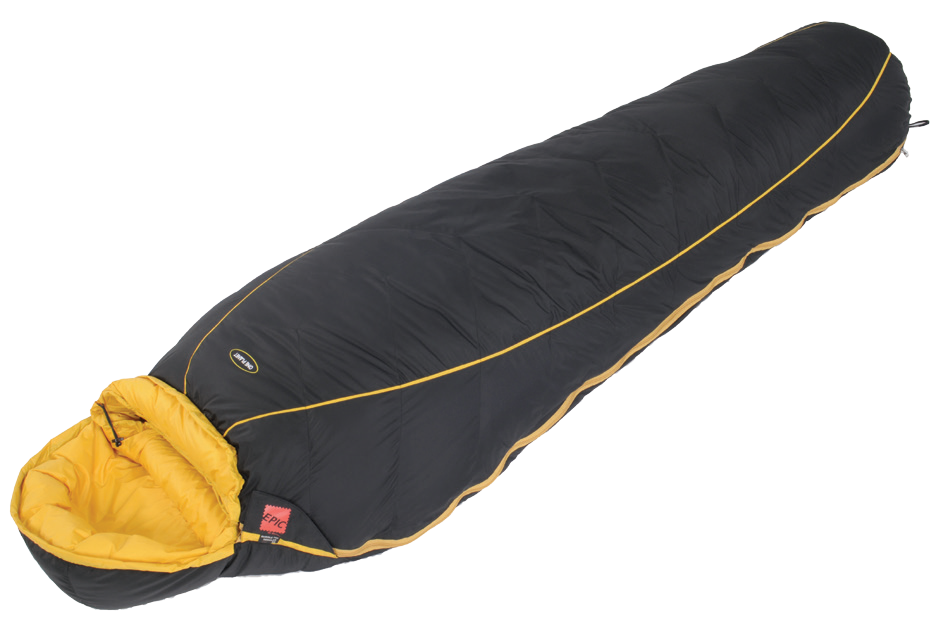

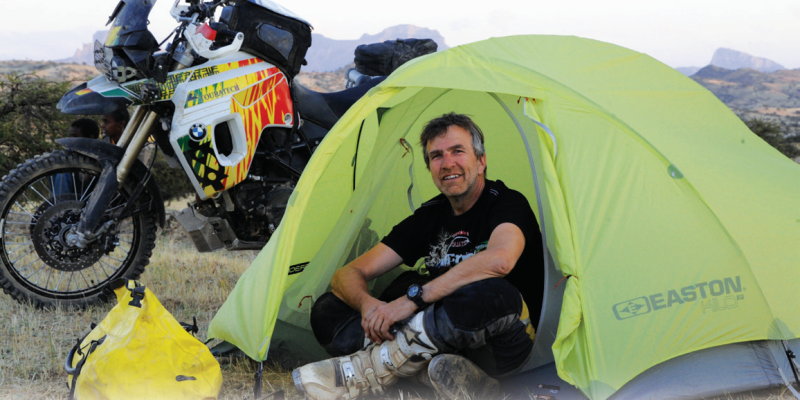

















Comments